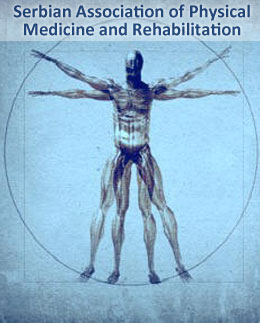
| Home | Place | Registration | Sponsors | Social Programme | General info | Links | Contacts |
Vrnjacka Banja Geolocation: Vrnjacka Banja is located in the central part of the Republic of Serbia, at 43 ° 37 'north latitude and 20 ° 54' east longitude, about 200 km south of Belgrade. 25 miles from Kraljevo and 7 km from Trstenik. Banja is settled on gentle slopes of the mountain Goc towards Western Morava and the valleys of Vrnjacka and Lipovacka rivers. Depending on the part, altitudes range from 220 to over 300 meters. To the north is tamed fertile Western Morava and Gledic mountains, and to the south, over 100 km long Ibar Gorge is struggling through ancient Dardania, today Raska, where Serbian state was once created. On the other hand, the narrow mountain area of Vrnjacka Banja, with mountain Goc, is part of a vast forest - mountain complex Kopaonik, which extends to the south. In addition Goc (1.147m) and Kopaonik (2.017m), there are also Zeljin (1.785m), Jastrebac (1.492m) and Stolovi (1.375m). The entire mountain area of Banja is characterized with green valleys with swift mountain streams and small rivers on its way to the West Morava. The climate is temperate continental with the influence of mountainous climate. The influence of nearby mountains gives a micro climate of Vrnjacka Banja special character and makes it very pleasant. Summers are moderately warm with fresh mornings and evenings because of the wind that blows from Goc to Western Morava, and winters are snowy and without sharp frosts. The average annual temperature is 10.5 ° C, and the mean summer 20° C. History and tradition of spa treatment: At the confluence of Vrnjacica to Dubocica, on its right bank, there is a larger settlement from the time of the Baden culture (from 2200 to 1800. BC). Between the late Iron Age (1000 - 300 BC) area of Vrnjacka Banja was inhabited with Celtic population and members of Trikornians tribe. Usage of mineral waters goes back to the time of the Celtic Skordisk. Vrnjacka Banja hot mineral springs, from II to IV century, was home to Roman-built sanatorium and convalescent AQUAE ORCINAE for legionaries from V and VII Flavian legions, Klaudiana and Romanized indigenous tribal aristocracy. Medicinal quality of the water was also exploited by Slavs. After the Ottoman conquest of the Balkans, there is almost no data that Vrnjacka mineral waters were used. After liberation from the Turks in the early 19th century, Prince Milos has hired Saxon geologist baron Herder to investigate mineral resources in Serbia, who tested Vrnjacka Banja warm mineral water. The development of modern Vrnjacka Banja began operation in 1868 by Founding Society, the oldest tourist organization in the Balkans. Today Vrnjacka Banja is largest spa resort in Serbia and appreciated tourist center. The wider area of Vrnjacka Banja represents the richest and one of the most interesting tourist area of Serbia. This is an area where Middle Ages meet modern trends. This is the region with the most significant monuments of Serbian medieval culture, especially monasteries with a monumental fresco painting. Some of those are recognized as world cultural heritage and protected by UNESCO. Mineral water: The Vrnjacka spa has seven mineral springs. These are: Topla Voda, Slatina, Sneznik, Jezero, Borjak, White Spring, Vrnjacko vrelo. Four of those are used for therapy (Topla voda, Sneznik, Lake and Slatina), while two are used for production of table mineral water (Water Vrnjci). Vrnjacka mineral waters are applied in the treatment of: Diabetes; conditions after infectious jaundice; chronic inflammation of the intestines and stomach; disease of the gallbladder and bile ducts; ulcers in the stomach and duodenum; disease of the renal pelvis, bladder and urinary tract and other diseases. How to get there: By road or railway that connects the Western Morava valley with Balkan highways: Belgrade - Sofia and Belgrade - Athens, Vrnjacka Banja is very well connected to all parts of Serbia. Good local roads through forests and mountainous hinterland allow access to preserved natural environment. Accommodation: Vrnjacka Banja has high class hotels with covered swimming pools, conference halls and sports facilities. Company Fontana is largest hotel organization with about 800 beds. Also well known accommodation facilities are "Zvezda", "Sloboda", Villa "San", etc
|
InformationScientific works
|